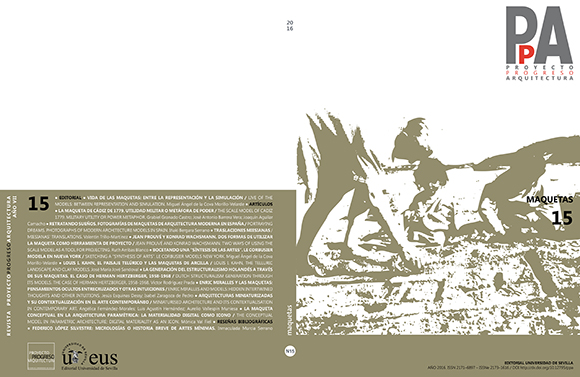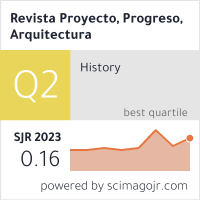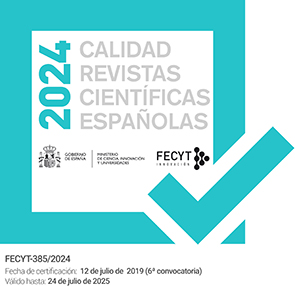BOCETANDO UNA “SÍNTESIS DE LAS ARTES”. LE CORBUSIER MODELA EN NUEVA YORK / Sketching a “Synthesis of Arts”. Le Corbusier models New York
DOI:
https://doi.org/10.12795/ppa.2016.i15.05Palabras clave:
Le Corbusier, modelado, Hugh Ferriss, Sede ONU Manhattan, Costantino Nivola, sand-casts / modelling, UN Headquarters Manhattan,Resumen
RESUMEN Las maquetas de arcilla de René Chambellan y las perspectivas al carboncillo realizadas por Hugh Ferriss serían las encargadas de conformar, verificar y difundir las propuestas para la Sede de las Naciones Unidas del equipo internacional de arquitectos liderado por Wallace K. Harrison. Una forma de preservar en el nuevo proyecto, desde sus primeras representaciones, un estilo y una idea de ciudad, Manhattan. Le Corbusier moldeará él mismo la maqueta de su propuesta 23-A: la ciudad bocetada es otra, antagonista, a la que le acoge. Un año después, realizará junto a Costantino Nivola otro trabajo manual de modelado, los sand-casts, que trasmite, a otra escala, la expresividad directa del material bajo la huella del hombre, vía idónea para los intereses del Le Corbusier post-bélico.
Las raíces del modelado y la escultura se alargan en la trayectoria de Le Corbusier hasta su formación bajo el magisterio del escultor Charles L’Eplattenier. Tanto en la maqueta 23-A como en los sand-casts, estas nuevas plásticas se distancian de las delineadas por la luz del purismo y la funcionalidad estilizada. Para Le Corbusier, la arena de la playa o el damero de Manhattan son el soporte para construir una Síntesis de las Artes.
SUMMARY Scale-models in clay by René Chambellan and charcoal perspectives by Hugh Ferriss would lead the task of shaping, verifying and broadcasting the United Nations Headquarters proposals from a team of international architects led by Wallace K. Harrison. From their very earliest representations, this choice would preserve a style and idea of the city in the new project, that of Manhattan. Le Corbusier himself would shape his scale-model from his proposal 23-A: the city he was moulding was different, antagonistic, to that which he was fostering. One year later, together with Costantino Nivola, he would make a new modelling craftwork, called sand-casts, which would convey, in another scale, the direct expressiveness of the material under the handprint, the ideal route for Le Corbusier’s post-war interests.
The roots of “modelling” and sculpture would extend in Le Corbusier’s career, from his early years under the master sculptor, Charles L’Eplattenier. The 23-A scale-model and the sand-casts, the new “plastiques”, would drift away from those represented by the light of Purism and Functionalism. To Le Corbusier, the sand of the beach or the grid of Manhattan urbanism, were foundations on which to build a “Synthesis of Arts”.
Descargas
Citas
AA. VV.: L’Architecture d’aujourd’hui. «numéro Hors série, 2ème nº spéciale Le Corbusier». Boulogne: André Bloc (Ed.) Avril 1948.
AA. VV.: L’Architecture d’Aujourd’hui. Boulogne: Ed. L’Architecture d’Aujourd’hui. 1946.
AA. VV.: Le Corbusier Plans. DVD Collection. Vol.9. Tokyo: Echelle-1. FLC. 2010.
Boesiger, W. (Ed.): Le Corbusier. OEuvre Complète. Volume 5. 1946-52. Basel: Birkhäuser, 1999 (1º ed.: 1953).
Brooks, H. Allen (Ed.): The Le Corbusier Archives. Vol. XVII. New York: Garland, 1983.
Columbia Daily Spectator, Volume LX, Number 13, 12 October 1936.
Dudley, George A: A workshop for peace: designing the United Nations headquarters. Cambridge (MA): MIT Press, 1994.
Ferriss, Hugh: The Metropolis of tomorrow. New York: Ives Washburn, Pub. 1929.
Guédy, Henry: La Section d’architecture à l’École nationale et spéciale des Beaux-arts, contenant les programmes d’admission, l’exposé pratique de chaque partie de l’examen, les différents modèles de dessin et de modelage, les questions orales et écrites, posées en géométrie, arithmétique et histoire, le règlement intérieur de l’École des Beaux-arts, spécial à l’École d’architecture. Paris: Aulanier, 1894.
http:www. docomomo-us.org.: Raymond Hood. 17-august-2012.
Koolhaas, Rem: Delirio de Nueva York. Un manifiesto retroactivo para Manhattan. Barcelona: Gustavo Gili, 2004.
Le Corbusier: La Ville radieuse: éléments d’une doctrine d’urbanisme pour l’équipement de la civilisation machiniste. París: Vincent, Fréal & Cie, 1964.
Le Corbusier: New World of Space, Same Day... City planning and Architecture, Sculpture, painting. The foundation of his Work. New York: Reynald and Hitchcock, 1948.
L’Eplattenier, Charles: Commission de L’École d’Art de La Chaux-de-Fonds, Rapport de la Commission de L’École d’Art 1905- 1906. La Chaux-de-Fonds. 1906.
Mameli, Maddalena: Le Corbusier e Costantino Nivola. New York 1946-1953. Milano: Franco Angeli, 2012.
Niemeyer, Oscar: Niemeyer par lui-même: l’architecte de Brasilia parle à Edouard Bailby. Paris: Bailand. 1993.
Stern, Robert: Raymond Hood. New York: Rizzoli, 1982.
Valery, Paul. Eupalinos o el arquitecto, Valencia: Colegio Oficial de Aparejadores y Arquitectos técnicos de Madrid, 1982.
Descargas
Publicado
Cómo citar
Número
Sección
Licencia
Las ediciones impresa y electrónica de esta Revista son editadas por el Secretariado de Publicaciones de la Universidad de Sevilla, siendo necesario citar la procedencia en cualquier reproducción parcial o total.
Salvo indicación contraria, todos los contenidos de la edición electrónica se distribuyen bajo una licencia de uso y distribución “Creative Commons Atribución-NoComercial-SinDerivar 4.0 Internacional” ![]() . Puede consultar desde aquí la versión informativa y el texto legal de la licencia. Esta circunstancia ha de hacerse constar expresamente de esta forma cuando sea necesario.
. Puede consultar desde aquí la versión informativa y el texto legal de la licencia. Esta circunstancia ha de hacerse constar expresamente de esta forma cuando sea necesario.
Los autores/as que publiquen en esta revista aceptan las siguientes condiciones:
- Los autores/as conservan los derechos de autor y ceden a la revista el derecho de la primera publicación, con el trabajo registrado con la licencia de atribución de Creative Commons, que permite a terceros utilizar lo publicado siempre que mencionen la autoría del trabajo y a la primera publicación en esta revista.
- Los autores/as pueden realizar otros acuerdos contractuales independientes y adicionales para la distribución no exclusiva de la versión del artículo publicado en esta revista (p. ej., incluirlo en un repositorio institucional o publicarlo en un libro) siempre que indiquen claramente que el trabajo se publicó por primera vez en esta revista.
- Se permite y recomienda a los autores/as a publicar su trabajo en Internet (por ejemplo en páginas institucionales o personales) antes y durante el proceso de revisión y publicación, ya que puede conducir a intercambios productivos y a una mayor y más rápida difusión del trabajo publicado (vea The Effect of Open Access).









